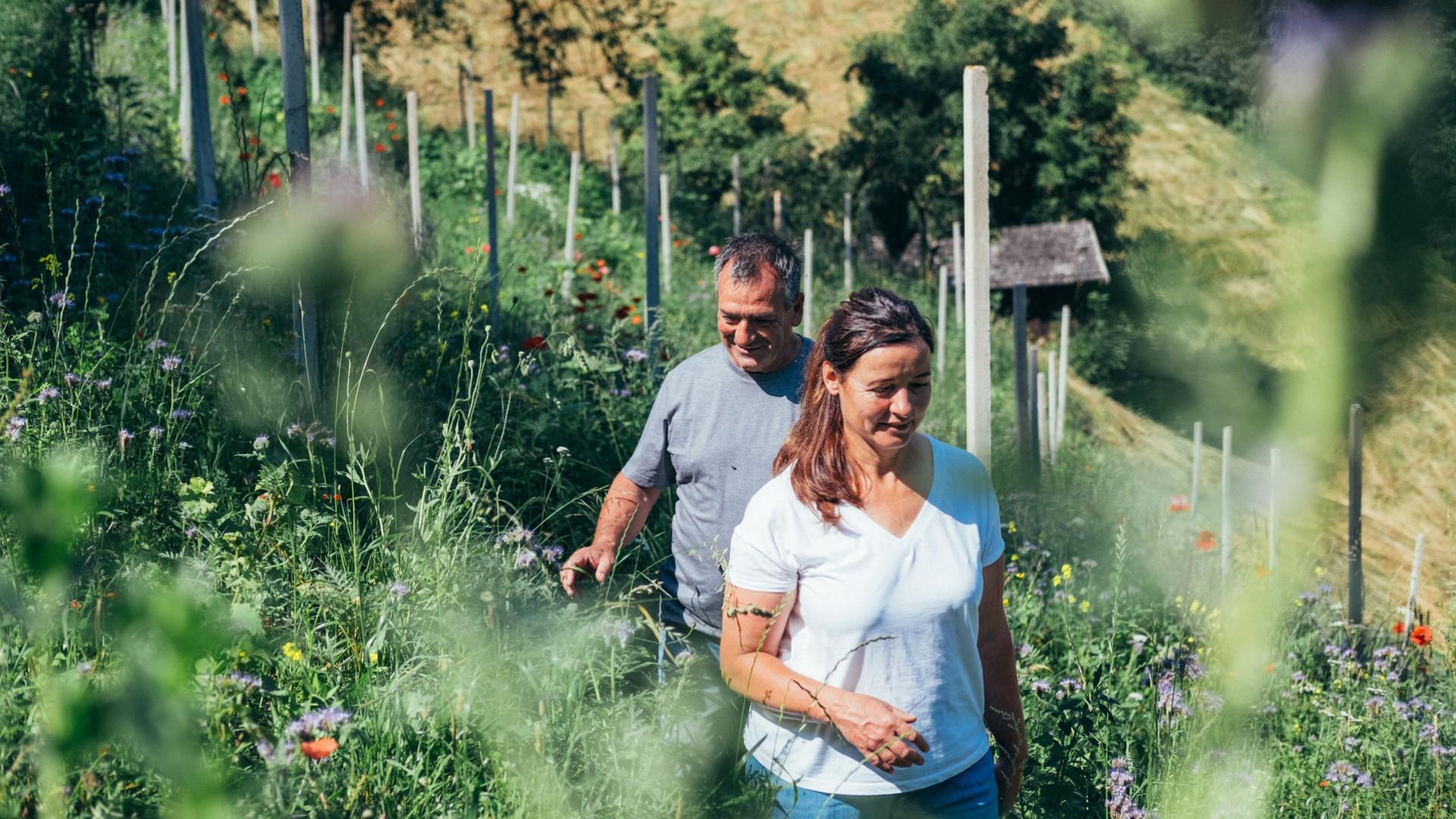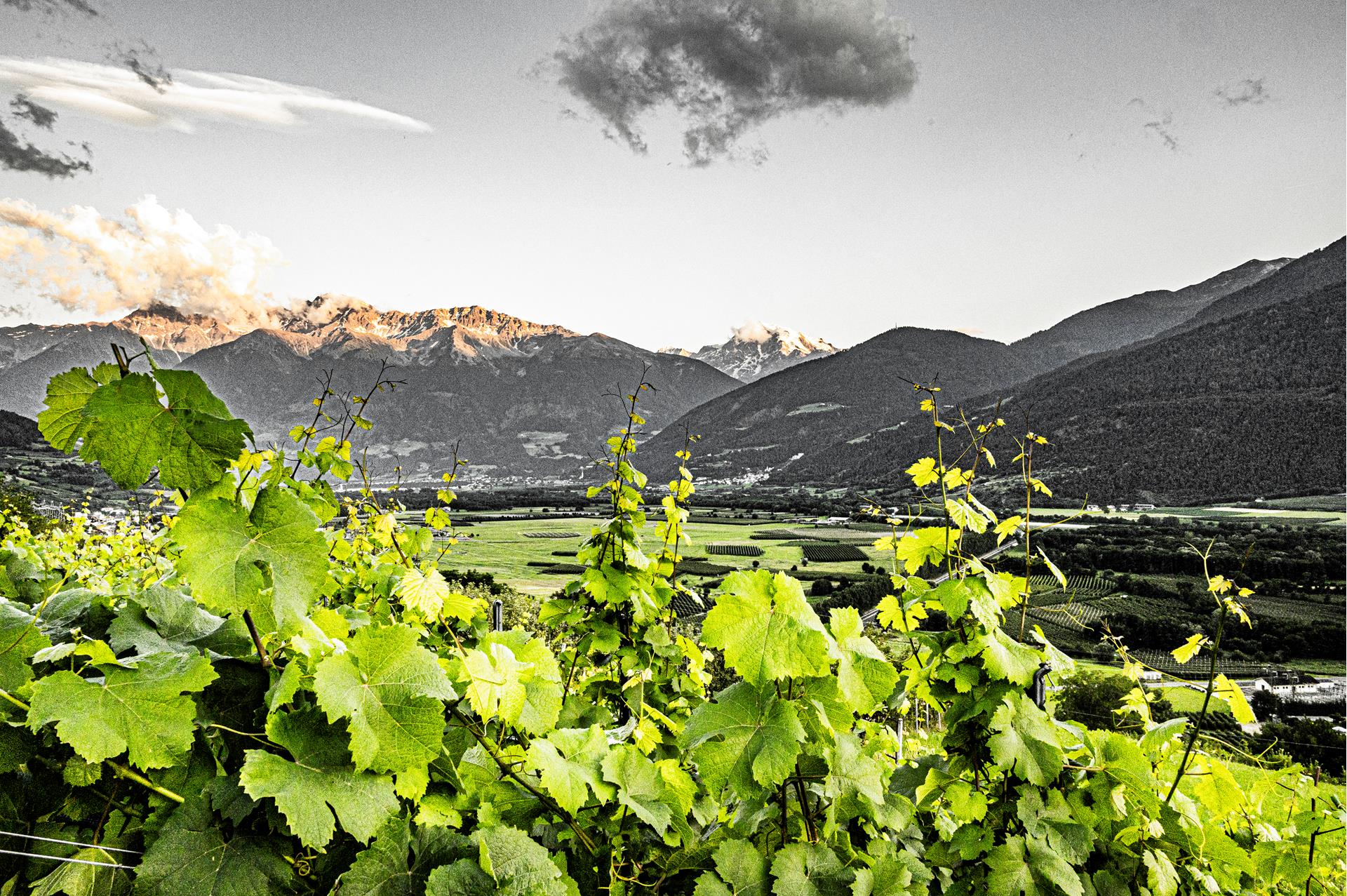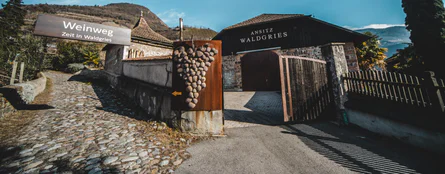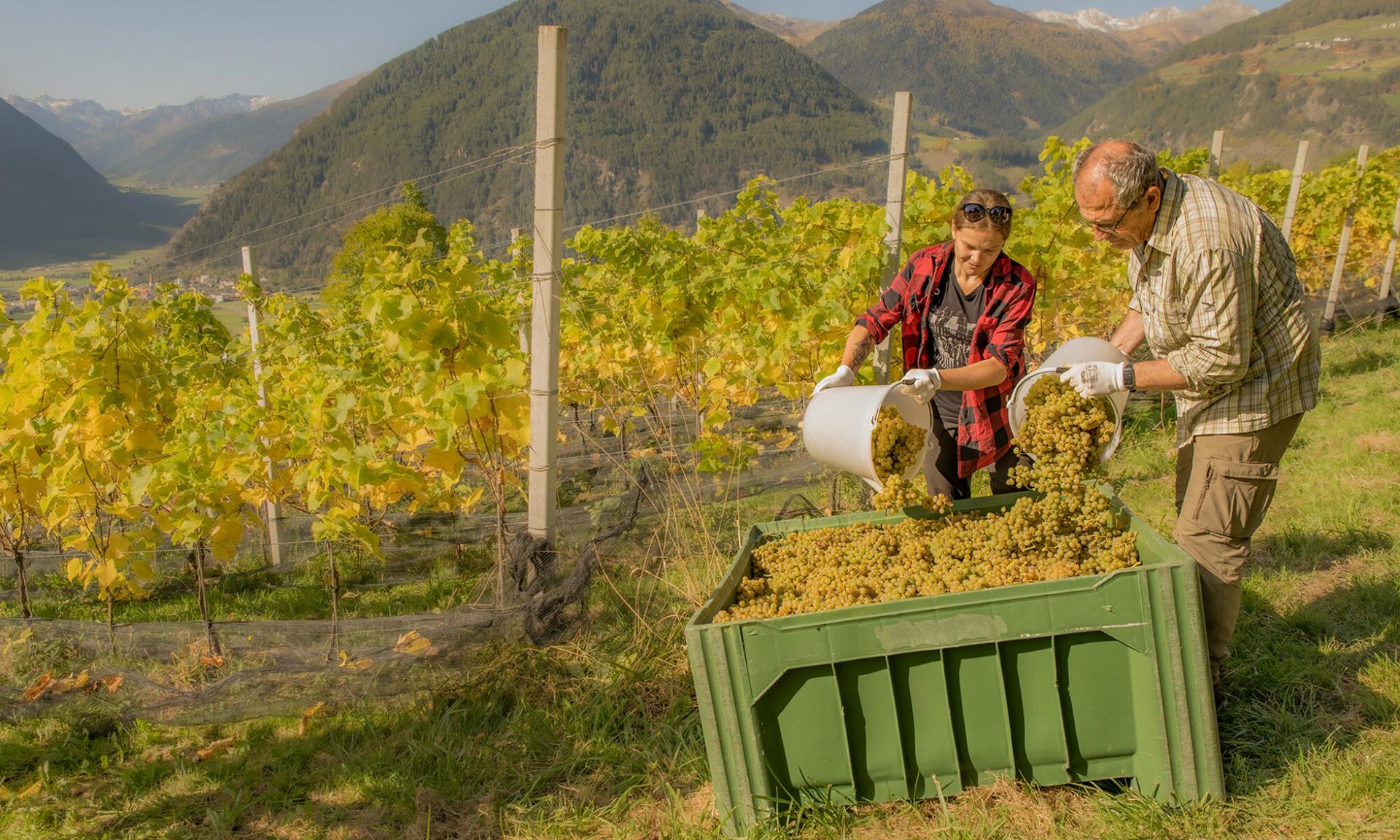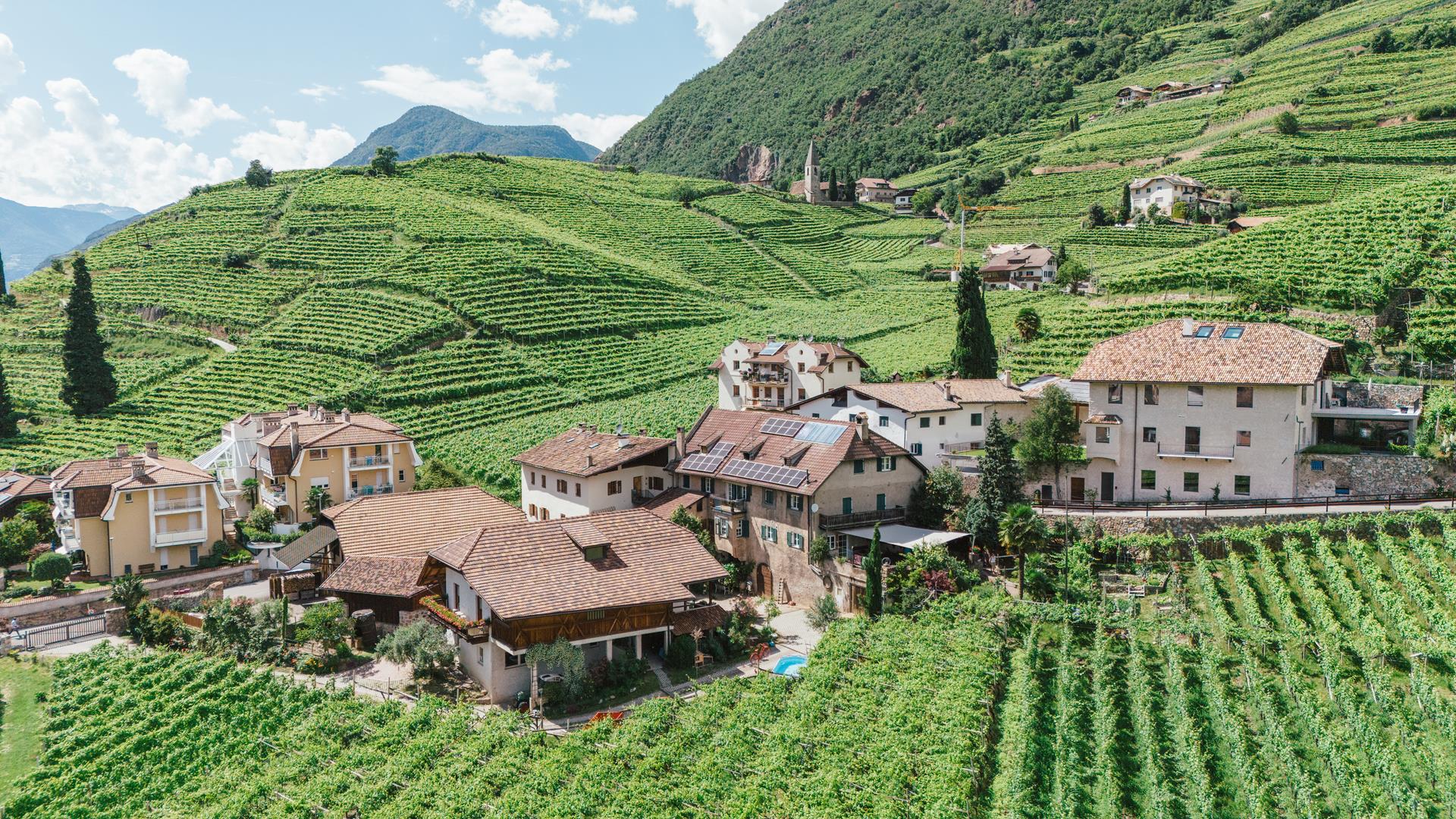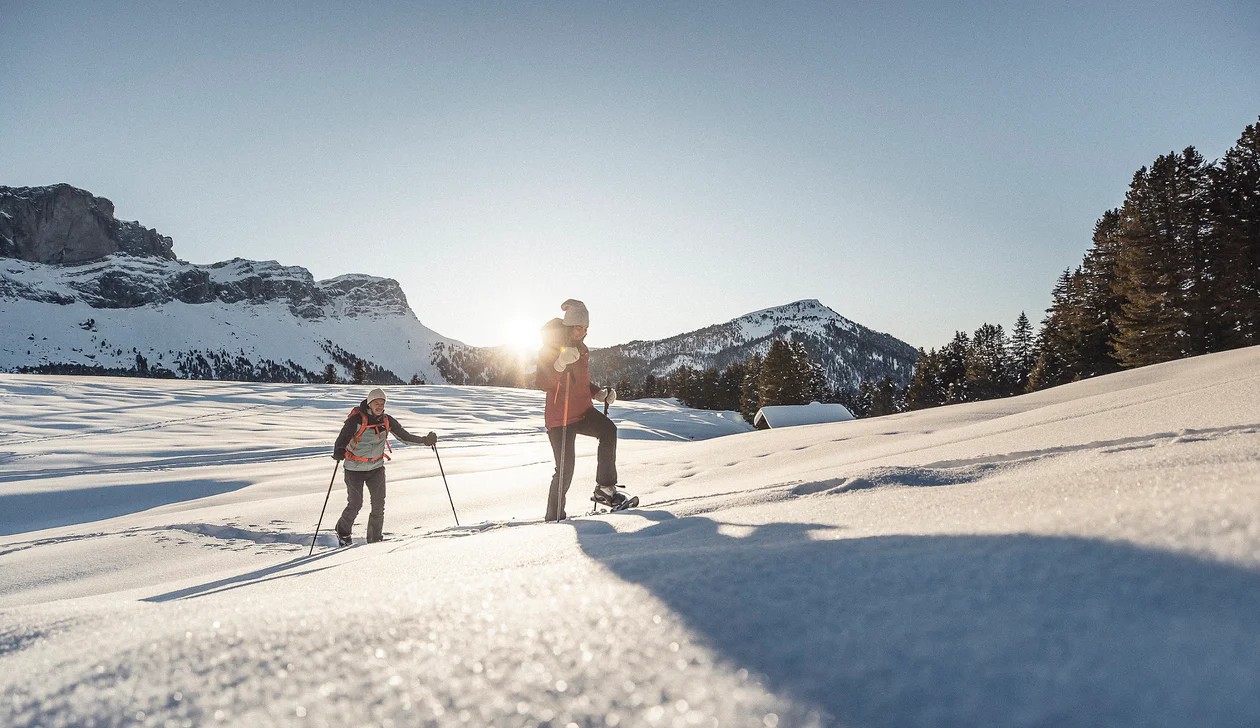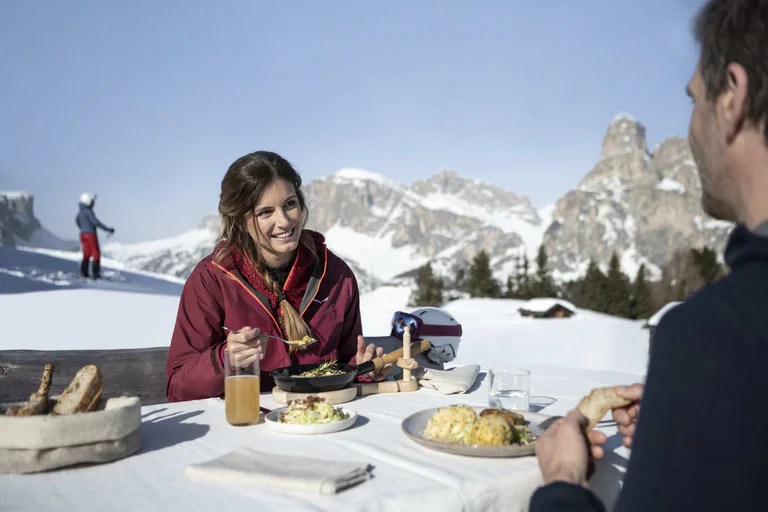Merano was once regarded as the southern balcony of the Austro-Hungarian empire, and its particular climate has turned the city into a health resort that is renowned and popular throughout all of Europe. And more than just that: a lot of sunshine, very little precipitation, mild temperatures, and good air circulation are also optimal for winegrowing, which also emphasizes the century-old wine tradition at the Partaneshof estate winery in Merano. A tradition which proprietor Matthäus Ladurner continues to cultivate today with passion.
So it is not only organic fruit that grows in the orchards around the Partaneshof, but also the basis for top-quality wines. “We make a comparatively broad palette of varietals, ranging from Lagrein and Pinot Noir to Chardonnay, Schiava, and Cabernet all the way to Shiraz,” Ladurner explained.
And it is specifically from the indigenous Schiava grapes that an extraordinary wine is made at the Partaneshof in Merano. “With the ‘Merano Küchelberg’, we produce the typical light Merano Schiava variant,” explains the winegrower, who also has a second favorite in his assortment on offer. “Chardonnay is one of our preferred Alto Adige wines: a fruity, noble white wine that goes with all occasions.”

